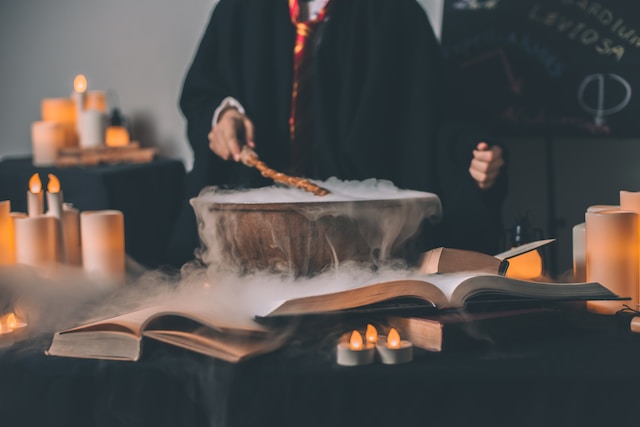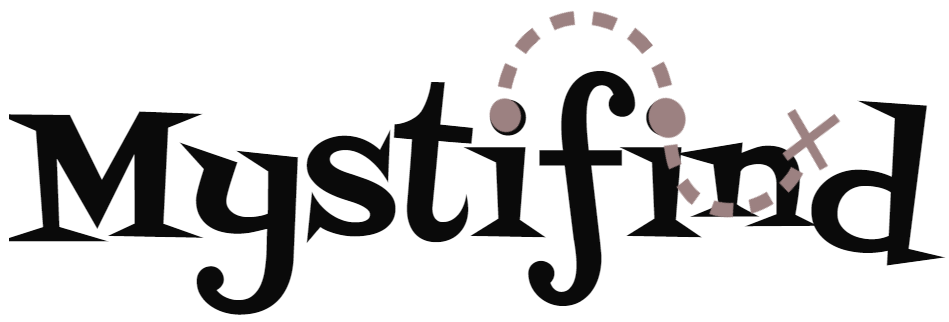
The Wizarding World has captivated the imaginations of readers and viewers all around the world. From Muggles to Wizards, this beloved universe is filled with exciting characters, magical creatures, and thrilling adventures. In this article, we will explore the fascinating history behind this otherworldly realm – from its origin in literature to its manifestation on screen. So grab your wand, hop on your broomstick, and transport yourself into a journey through time as we uncover the secrets of the Wizarding World!
Since it was first introduced by J.K Rowling in her Harry Potter series nearly two decades ago, the Wizarding World has been an ever-evolving phenomenon that continues to captivate audiences worldwide. The original books were so influential that they spawned films, video games, theme parks and even stage shows – giving fans more opportunities than ever before to immerse themselves in this enchanting realm. But what inspired Rowling’s creation? What does it take for a story about magic to become such a global phenomenon? These are just some of the questions we’ll be answering as we learn about the history of this magical world.
From ancient folklore to modern movie franchises, our exploration into the past of The Wizarding World promises an exciting adventure like no other! Join us now on a journey into time as we discover how Muggles became wizards – and why these fantastical stories have remained popular throughout centuries!
Origin Of Magic
The origin of magic is a mystery that has perplexed people for centuries. Many cultures have tales and legends surrounding the source of magical power, with some believing it to be an innate gift from gods or divine beings. Others believe that sorcery, witchcraft and wizardry were developed by wise and powerful humans who had learned how to tap into the spiritual realm.
One of the earliest recorded accounts of magic comes from Ancient Egypt, where priests would often perform rituals to call upon deities in order to access supernatural powers. In addition, they also practiced divination, astrology and Alchemy as forms of enchantment. Similarly, the ancient Greeks believed in many magical creatures such as centaurs and nymphs, while their shamans used spells to heal sicknesses or summon spirits for guidance.
Throughout history there have been countless examples of different forms of mysticism across cultures around the world; however, none compare to the complexity and richness found within the Wizarding World – a place where witches, wizards and other mystical creatures live side-by-side with muggles (non-magical folk) in harmony. This unique environment provides us with insight into how these practices have evolved over time and continue to fascinate us even today.
Magical Creatures
The wizarding world is home to a variety of magical creatures, each with its own unique characteristics and abilities. Unicorns are powerful yet gentle, possessing the ability to heal when their blood is consumed in potion form. Centaurs are highly intelligent and they live in forests, where they use astrology to determine fate and prophecy. Merpeople can breathe underwater as well as on land; however, it’s difficult for them to communicate with humans due to language barriers. House elves are loyal servants who often find themselves employed within wizarding households. As for goblins, their intelligence rivals that of wizards and witches, although all too often they’re mistreated by those more powerful than them.
These creatures have been an integral part of the wizarding world since its inception and continue to be so today. They’ve provided assistance in times of need while also presenting new challenges along the way – whether through battles or everyday interactions between species. Though there have been conflicts throughout history, these creatures remain respected members of society whose contributions should not go unnoticed.
Wizarding Schools
Following the magical creatures of the wizarding world, it’s time to explore its educational system. Magical education has always been a key component in understanding and mastering magic. Wizarding schools are institutions that provide specialized instruction on all aspects of the wizarding world and have become an integral part of life for young witches and wizards.
The first known school was created by Godric Gryffindor and Salazar Slytherin over one thousand years ago in Great Britain. Since then, many more schools have opened up across Europe and beyond. These schools not only teach students about the history and science of magic but also serve as hubs for magical learning through practical application. Students learn how to use wands, brew potions, cast spells, practice dueling techniques, understand the Care of Magical Creatures and much more.
At these schools of magic, students receive a comprehensive education in every aspect of their magical lives from highly trained professors with decades worth of experience in teaching magic. The lessons learned at these establishments stay with them throughout their entire lives-helping them to succeed both magically and personally. Through rigorous courses taught by experts in the field, they gain knowledge that helps guide their decisions during times of uncertainty or difficulty while giving them the skills they need to confidently face any challenge life throws their way.
Wizarding Schools offer a unique opportunity for those who seek out magical knowledge; providing invaluable insight into one’s own capabilities while helping shape tomorrow’s leaders within the wizarding world.
Magical Items And Artifacts
Magical items and artifacts have been an integral part of the wizarding world for centuries. Many items like magical staffs, wands, jewelry, books and many other enchanted objects are used by wizards to create powerful spells and enchantments. These magical items often come with immense power that can be used for both good and evil purposes.
The most iconic magical item is the wand. A wand is a thin rod made from wood or another material like a dragon heartstring or phoenix feather cores. It is used as a channel for magic and must be chosen carefully because it will only work correctly when it resonates with its user’s soul. Wands also need to be regularly fed energy in order to stay active and powerful.
Enchanted jewelry has long been popular amongst witches and wizards due to its appearance as well as its magical properties. Necklaces, rings, bracelets, earrings and lockets all have various powers depending on what they are created from such as unicorn hair or basilisk scales. Other popular magical artifacts include broomsticks, time-turners, portkeys, flying carpets, invisibility cloaks and even magical books filled with unique information about the craft of witchcraft and wizardry.
These items not only provide powerful abilities but also help us get closer to understanding the fascinating history of the wizarding world – proving that there truly is more to this universe than meets the eye!
Laws And Regulations
The wizarding world is subject to a complex set of laws and regulations, known as magical laws. These rules govern all aspects of life for wizards and witches, from their daily activities to the use of magic itself. It’s important to understand that these laws are binding on everyone within the community – no one is exempt from them.
Most commonly, magical laws deal with issues related to safety and security. For instance, there are strict restrictions on what kinds of spells can be used in public places. This includes things like using powerful hexes or transfiguring someone without permission. Additionally, certain objects deemed dangerous by the Ministry of Magic must be registered with the appropriate authorities before they can be used legally.
In addition to these general regulations, there are several specific witching regulations that apply only to members of this particular group. These include things like mandatory registration with local covens and adherence to certain rituals during gatherings. They also require witches and wizards to stay informed about current events within the wizarding world so they can remain compliant with new ordinances or spell restrictions when necessary.
Overall, it is clear that magical laws play an integral role in keeping both muggles and wizards safe while providing guidelines for proper conduct among those who live in this unique society. By following these laws closely and abiding by any additional requirements put forth by their respective communities, wizards ensure their continued success – both collectively and individually – for years to come.
Cultural Impact
Having explored the laws and regulations of the Wizarding World, it is time to examine its cultural impact. Magic has been a part of many cultures for centuries, influencing societies in various ways. Such influence can be seen in the way magic affects everyday life within the world, as well as how it interacts with Muggles around them.
The magical community has had an undeniable impact on society throughout history. Magical practices have permeated our culture over time, from literature to art to music. The presence of magical creatures such as dragons and centaurs in ancient mythology reveals their effect on storytelling and our collective imagination. Even today, there is evidence that modern pop culture reflects ideas derived from magical concepts and themes.
Perhaps one of the most important implications of magic’s influence on society is its power to evoke feelings of wonderment and awe among all people – regardless if they are wizards or muggles alike. From stories about fantastical beasts to tales about brave heroes who battle evil forces – these mythical accounts remind us that even though we may not possess magical powers ourselves, we can still recognize beauty when it presents itself before us. This realization allows us to appreciate things beyond what is tangible and available for examination; allowing us to tap into something much deeper than just seeing with our eyes or touching with our hands.
Magic is more than just a tool used by wizards – it also serves as a source of inspiration for those outside the wizarding world. We should never forget this timeless truth: no matter where you come from or what abilities you do (or don’t) possess, everyone can find joy in believing in something bigger than themselves.
Conclusion
The wizarding world is full of mystery and enchantment. From the origins of magic to the laws that govern it, this realm has captivated people for centuries. Magical creatures, artifacts, and schools have all played a part in making the world a fascinating place.
At its heart, the wizarding world represents an opportunity to escape from reality and explore something new. It encourages us to think differently about our own lives and how we interact with one another. The impact it has had on culture is undeniable; Harry Potter’s success as both books and films stands testament to this.
Ultimately, there is no denying that the wizarding world continues to bewitch us all. Its history remains steeped in secrecy but also offers a glimpse into a magical universe where anything is possible. So why not take the time to discover more about this exciting world? Who knows what else awaits you?






